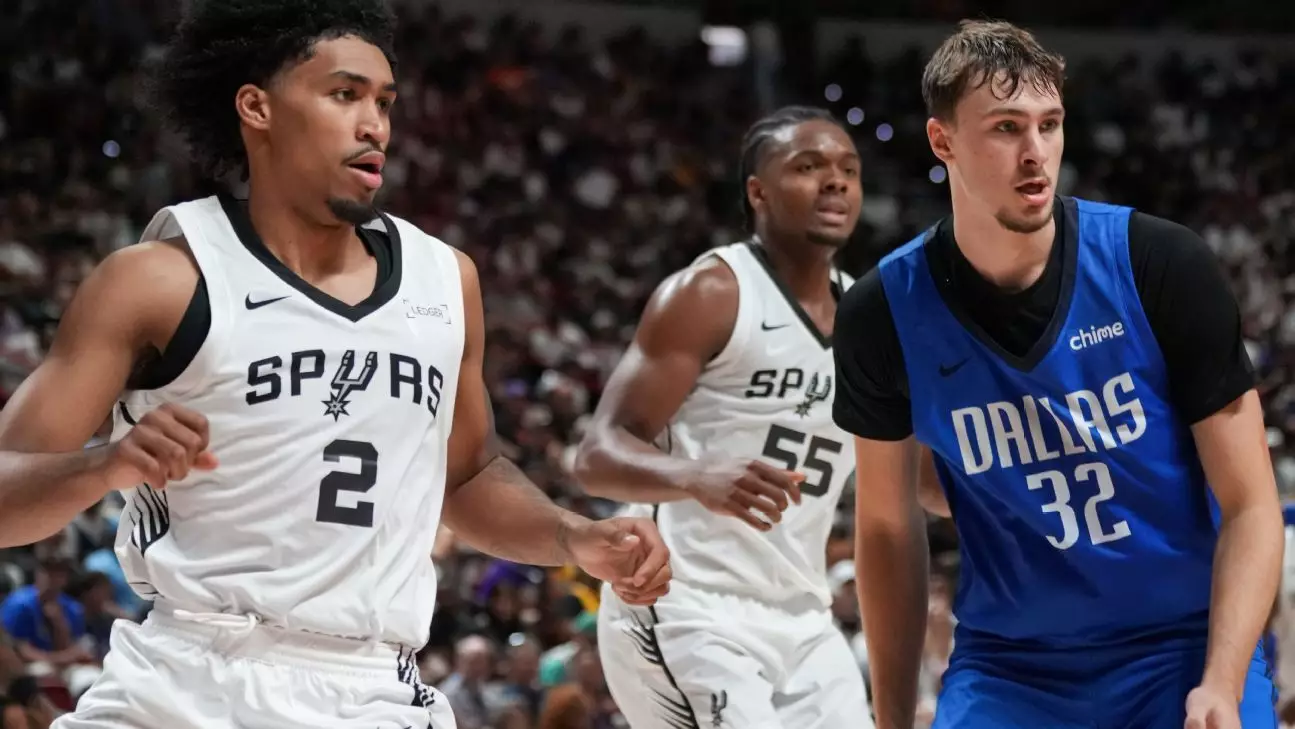The recent showdown between the top two prospects of the 2025 NBA draft, Cooper Flagg and Dylan Harper, offers a compelling glimpse into the future of professional basketball. As the game unfolded in Las Vegas’s electric summer league atmosphere, it became evident that a new era of talent and competition is on the horizon. With flashes of brilliance, resilience, and raw potential, these young stars are poised to redefine what we expect from the league’s next wave. Their performances are not just signs of individual talent but indicators of an impending shift toward a more dynamic, skilled, and competitive NBA landscape.
Significance Beyond the Scoreboard
Flagg’s commanding 31-point display and Harper’s impactful return highlight a fascinating duality—one of formidable skill and promising growth. Flagg, with his aggressive approach and ability to draw fouls—despite some free throw struggles—demonstrated a mature understanding of how to attack defenses and make an impact on both ends. His ability to escalate in crucial moments, like his highlight-reel dunk over Riley Minix and clutch drives, suggests he’s developing a clutch mentality early on. Meanwhile, Harper’s timely return from injury, coupled with his multifaceted game—contributing via scoring, rebounding, steals, and blocks—underscores a level of versatility and resilience rarely seen in players at this stage of development.
What’s most striking is the maturity each player exhibited amidst the bright lights of a packed arena, packed with NBA legends and celebrities. Their confidence wasn’t just a product of natural talent but also indicative of a mental toughness and competitive edge. The game was not merely a showcase of skills; it was a statement of intent. Both Flagg and Harper seem to understand their roles as future leaders and game-changers, and their performances reflect a depth of understanding that surpasses typical summer league displays.
Implications for the Future of Team Building
For teams like San Antonio and Dallas, the emergence of these prospects carries profound strategic implications. Flagg’s capacity to influence the game offensively and defensively makes him an invaluable asset that teams are eager to nurture. His ability to attack, facilitate, and defend suggests he can fill multiple roles, providing versatility that can be leveraged in various lineups. Harper, with his scoring talent and defensive presence, complements such a framework by adding a different dimension—an energetic guard capable of creating opportunities and making impactful plays.
The rivalry that is beginning to take shape between Flagg and Harper mirrors the legendary youth matchups that defined previous generations—think LeBron James versus Carmelo Anthony during their early days, or T-Mac against Vince Carter. Such rivalries inspire entire franchises and fanbases, fueling aspirations and adding layers of narrative to a league eager to embrace fresh superstar duels. These prospects aren’t merely future stars; they are potential franchise cornerstones who will shape the direction of their teams, influence draft philosophies, and redefine team-building strategies centered on youth, talent, and adaptability.
Beyond the Talent: A Shift in League Dynamics
What sets this year’s summer league apart—and what attribute of these young players really commands attention—is the maturity embedded within their performances. Flagg’s ability to handle pressure, attack with purpose, and adapt to NBA-style physicality signals that he is far beyond the typical rookie excitement phase. Harper’s evident leadership and competitive spirit, even after a lengthy absence, show a mental resilience that bodes well for his future growth.
This new wave of talent challenges the existing NBA hierarchy not only through raw ability but through their readiness to impact the game immediately. They represent a shift towards more skilled, adaptable, and mentally tough athletes. If summer league performances are any indication, this generation will prioritize versatility—playing multiple roles, defending multiple positions, and stacking layers of impact in each game. Coaches will need to rethink traditional roles, emphasizing fluidity and adaptability, and the league itself will become more unpredictable as a result.
Furthermore, their presence signifies a cultural change within the league—one that values not just athleticism but also basketball IQ, resilience, and the mental toughness to thrive under pressure. The NBA’s future belongs to those willing to embrace these qualities, and Flagg and Harper exemplify this new archetype of the modern basketball star: multifaceted, driven, and prepared to leave an indelible mark.
A Glimpse of Hope and Excitement for Fans
In a broader sense, the emergence of such promising talents injects fresh enthusiasm into a league heavily reliant on stars to draw attention. Fans, analysts, and franchises alike are eager for storylines rooted in genuine competition and emerging rivalries. The tandem of Flagg and Harper can evolve into a narrative that energizes the league for years to come—epitomizing the hope, competition, and relentless pursuit of greatness that define basketball’s spirit.
The game at Thomas & Mack Center, witnessed by icons and fans, underscores a vital point: the NBA’s future is not a distant dream but an unfolding reality. As these players sharpen their skills, the league’s landscape will inevitably shift—becoming faster, smarter, and more thrilling. Whether Flagg’s offensive arsenal or Harper’s unyielding tenacity, their growth will determine the league’s next chapter. And at this pivotal juncture, it’s clear that fans can look forward to a future brimming with promise, powered by the relentless ambition of the game’s newest generation.


Leave a Reply